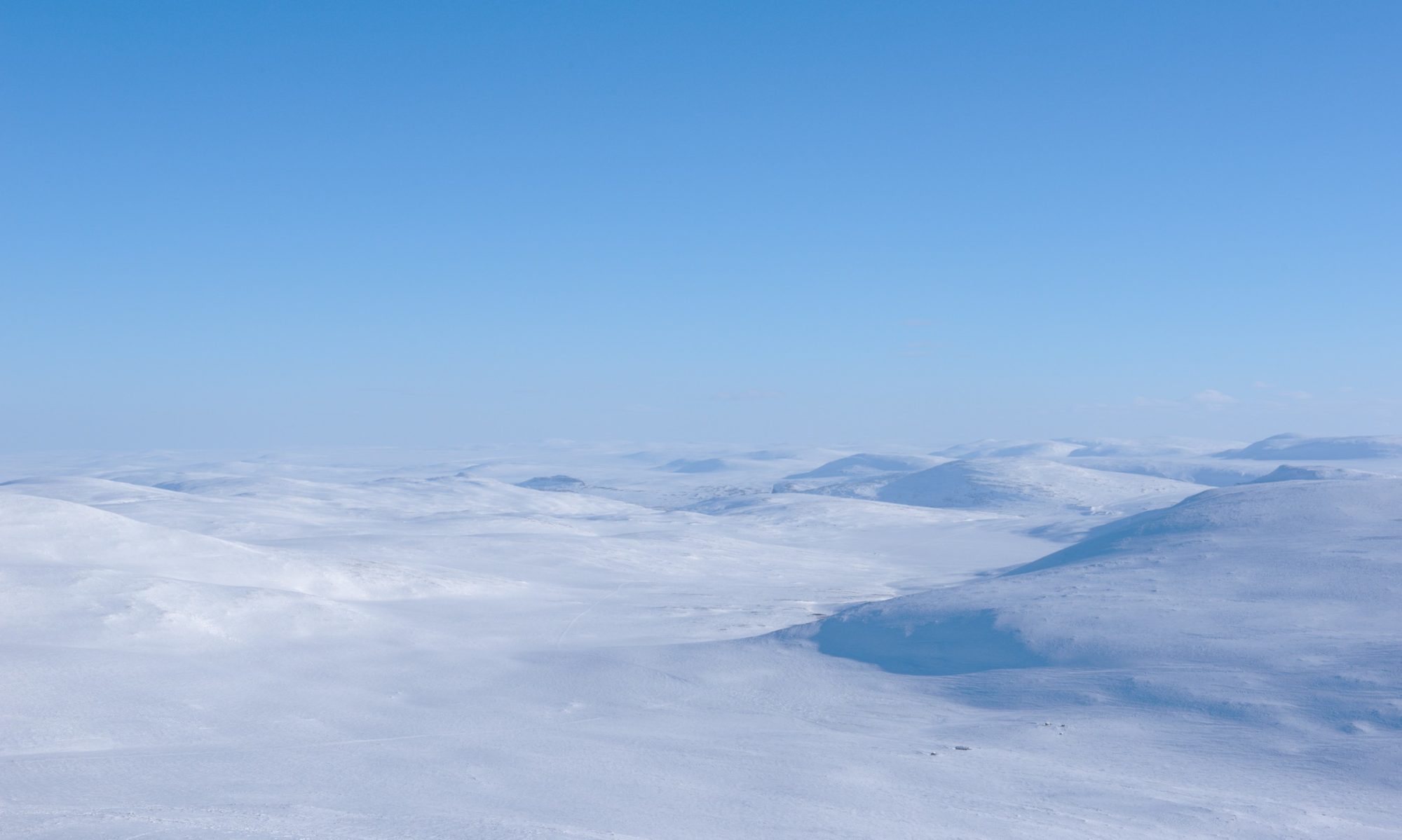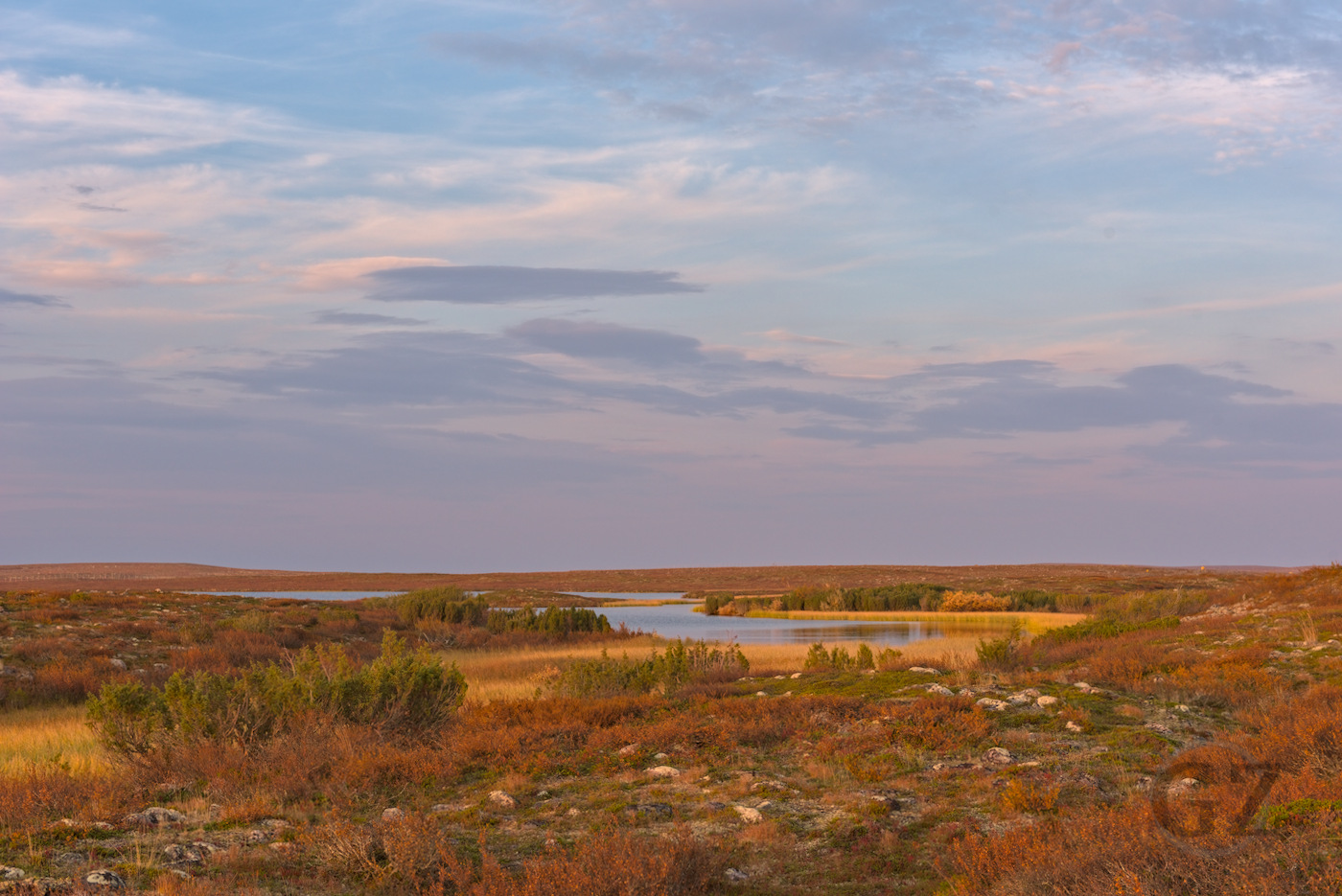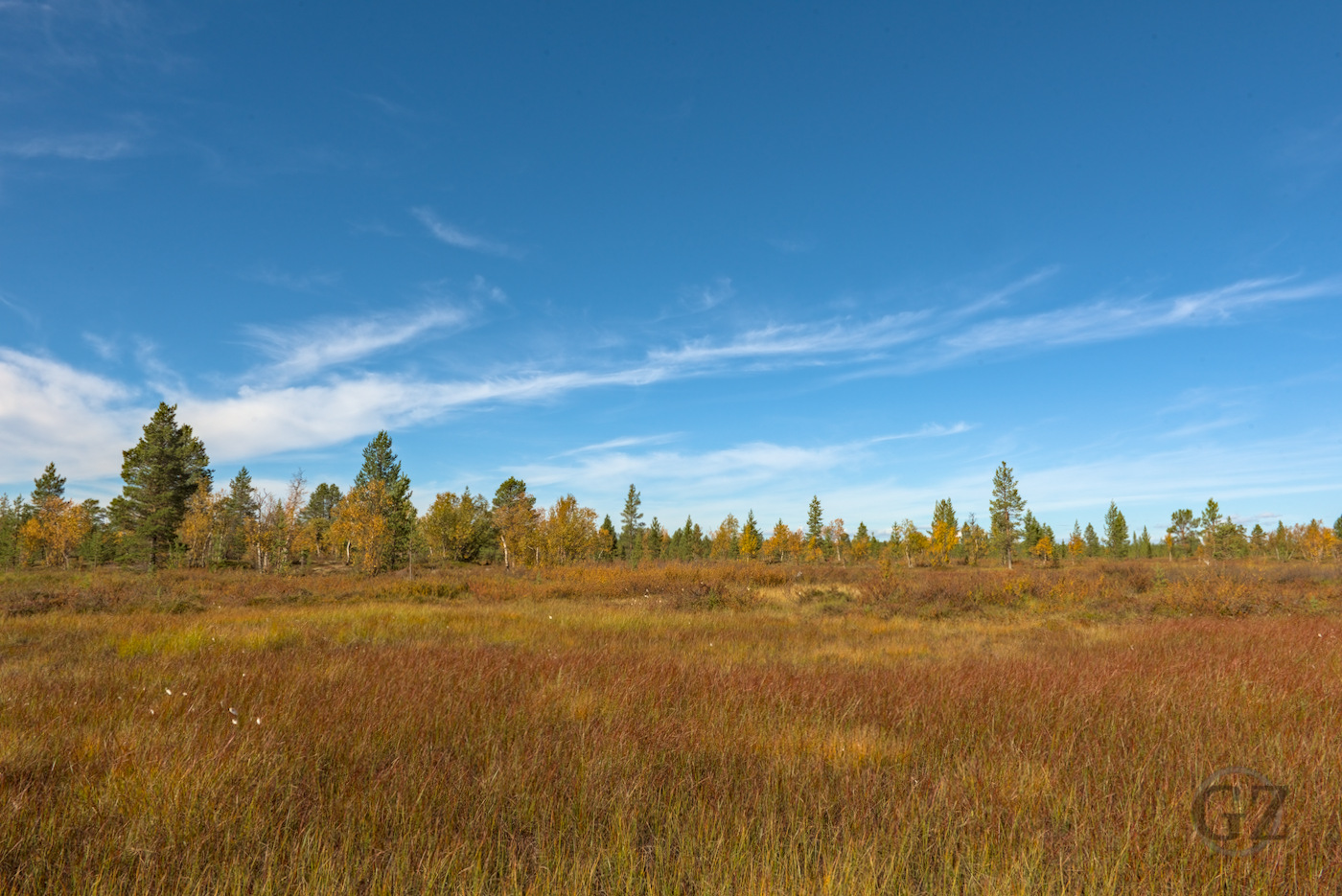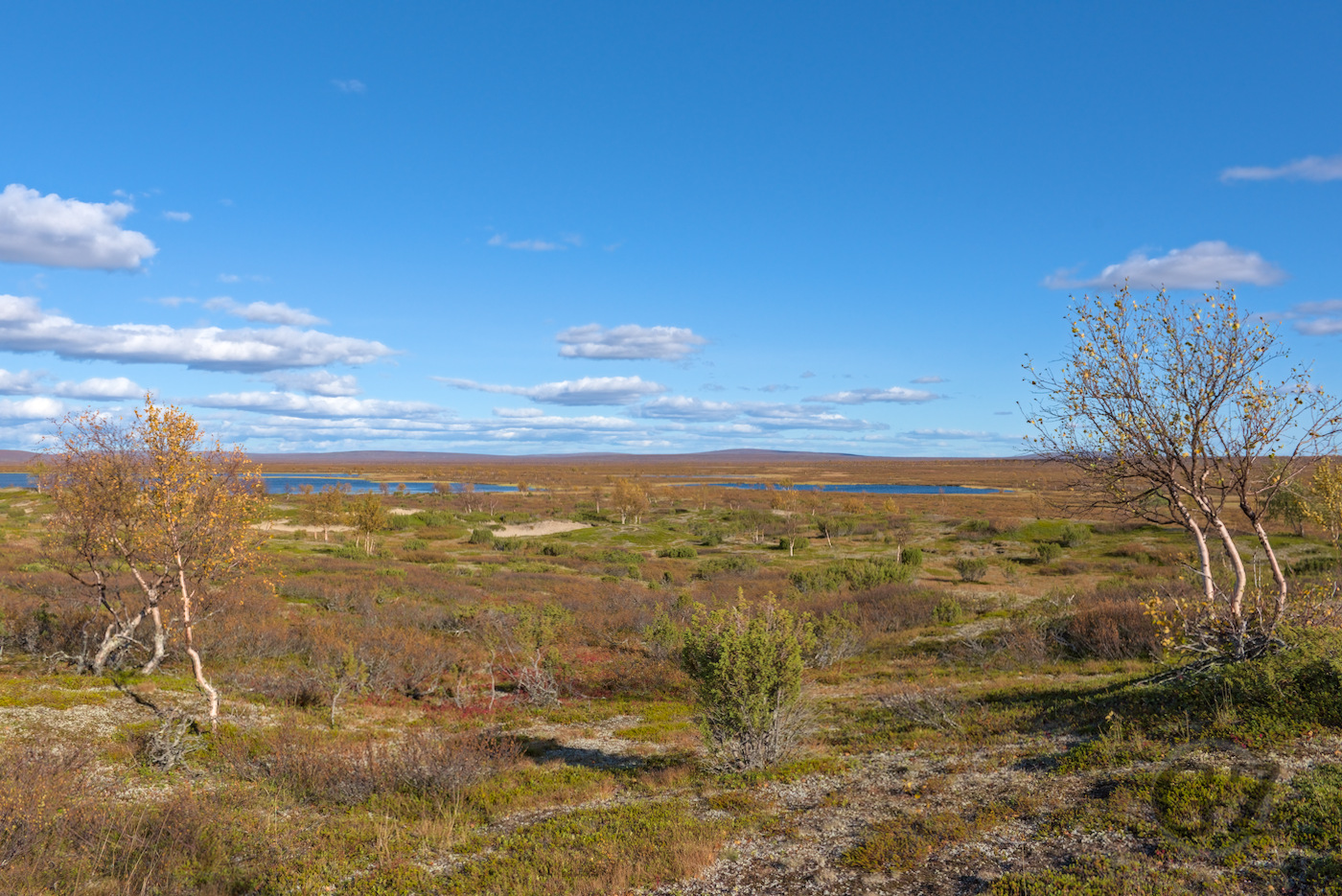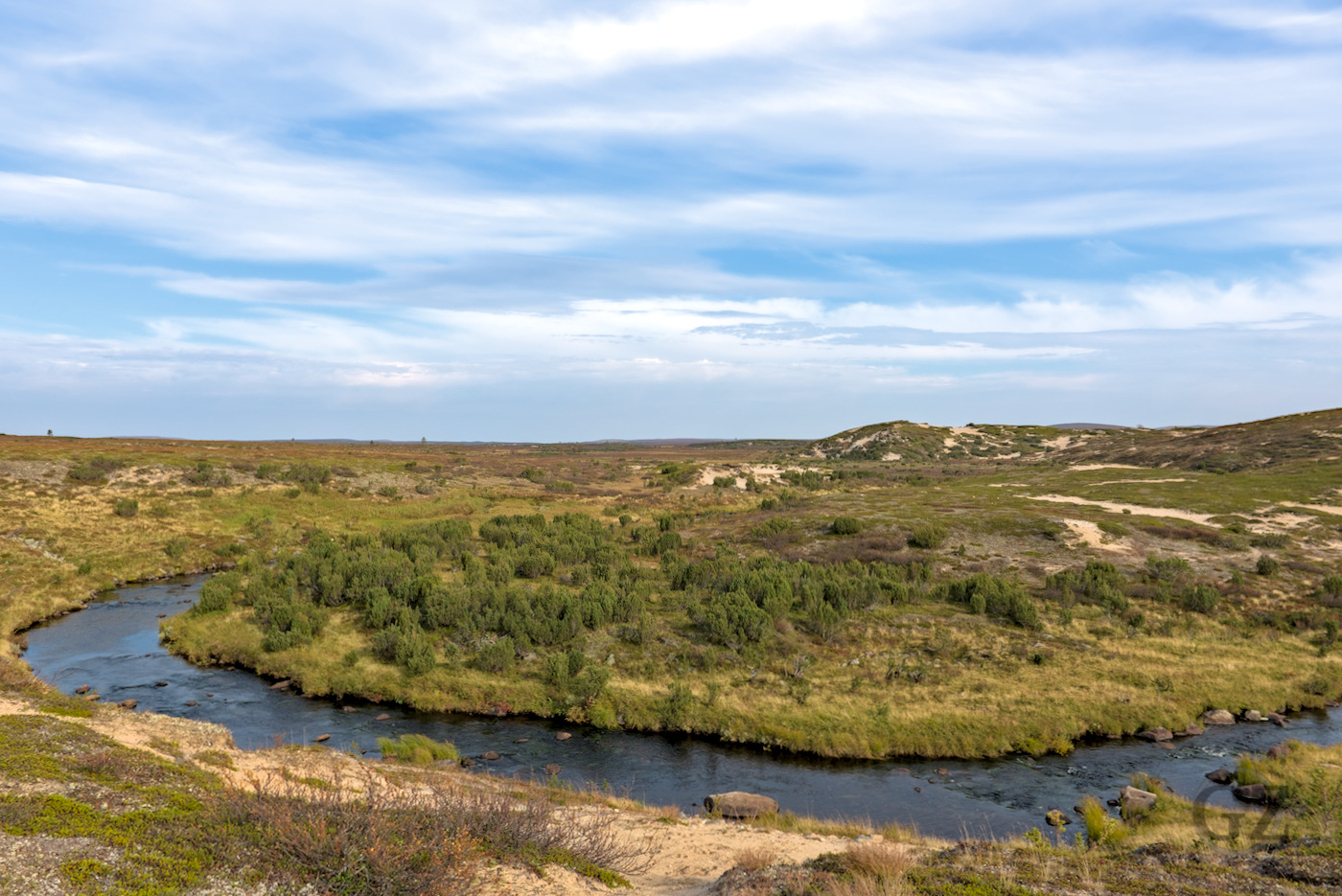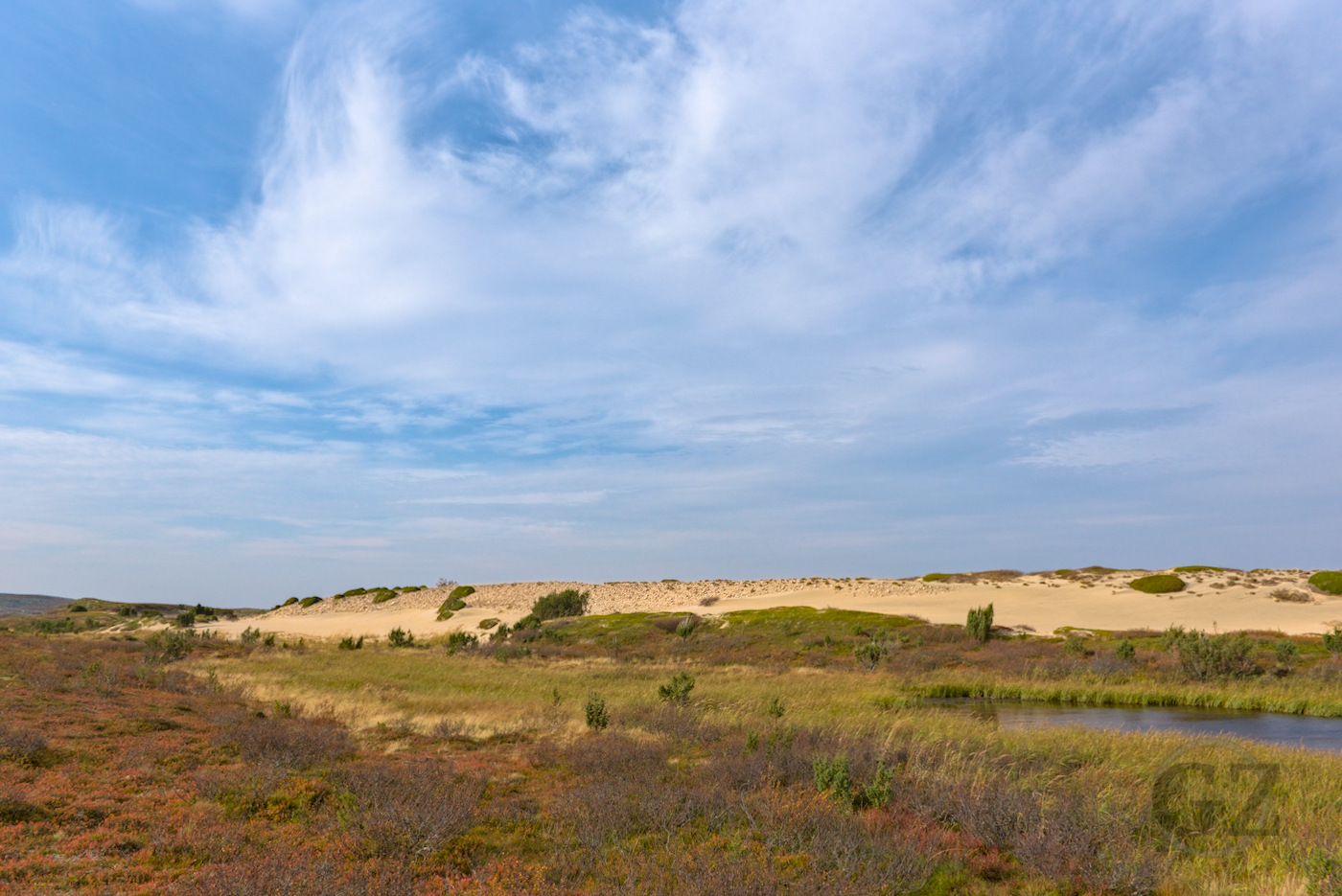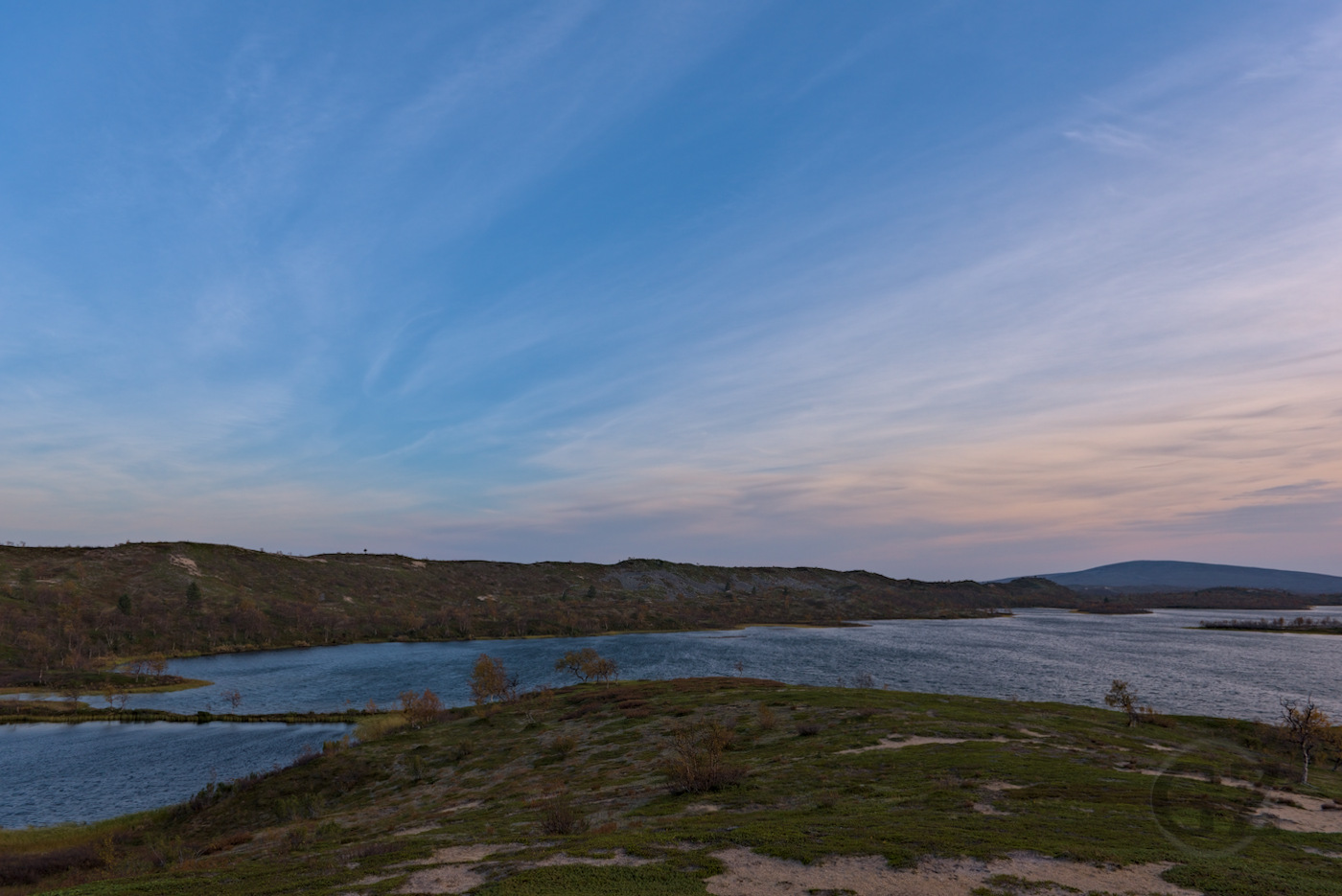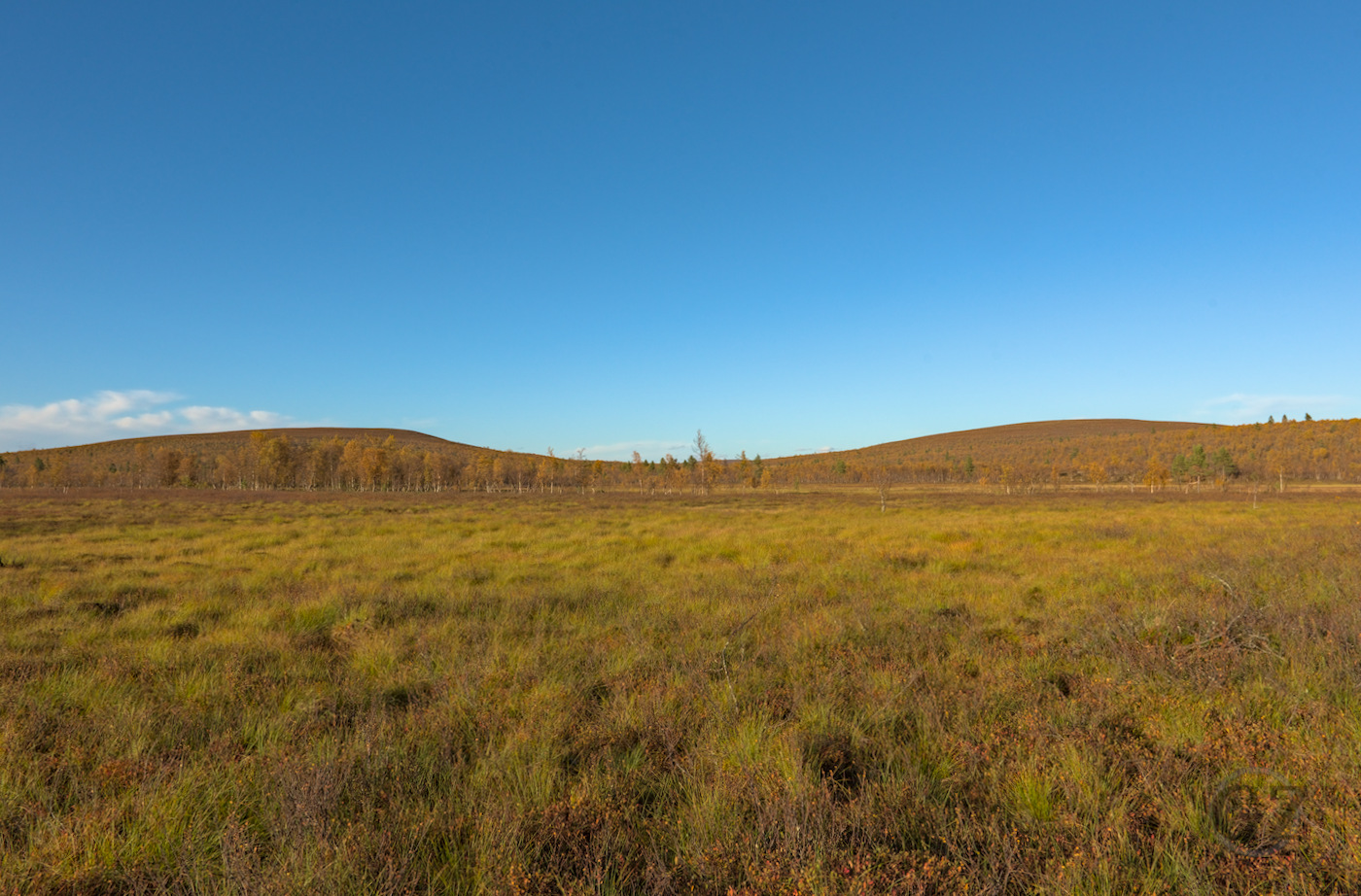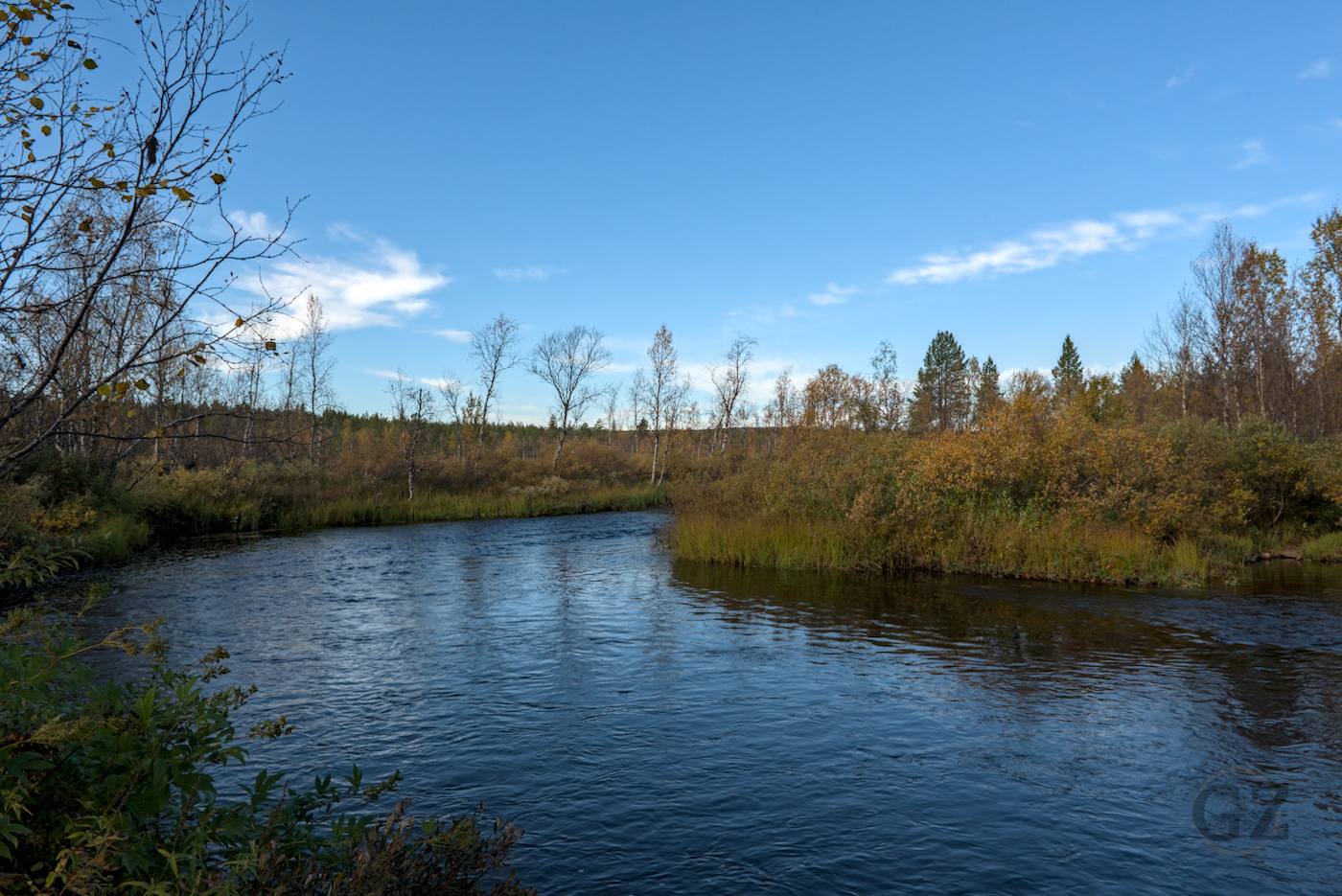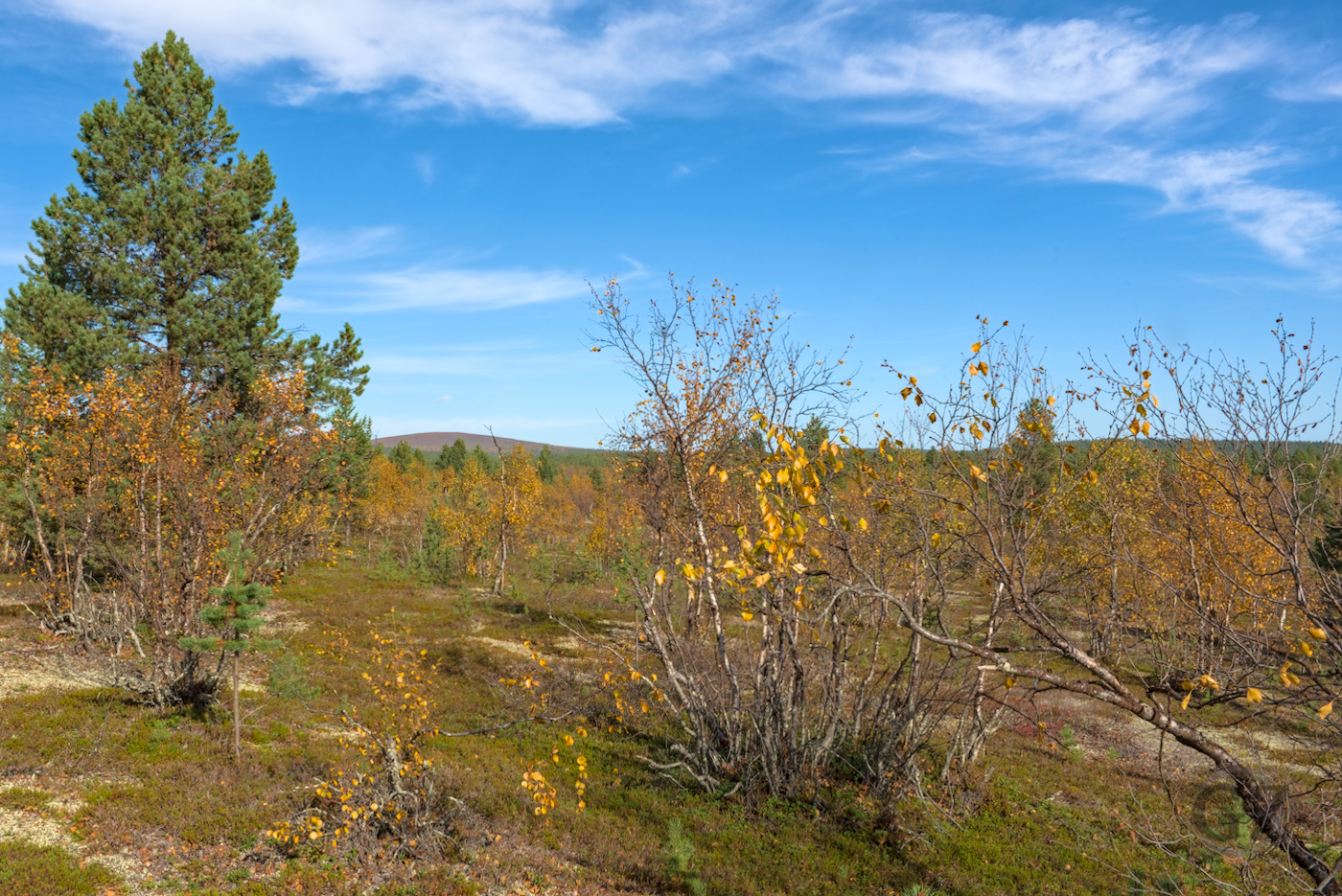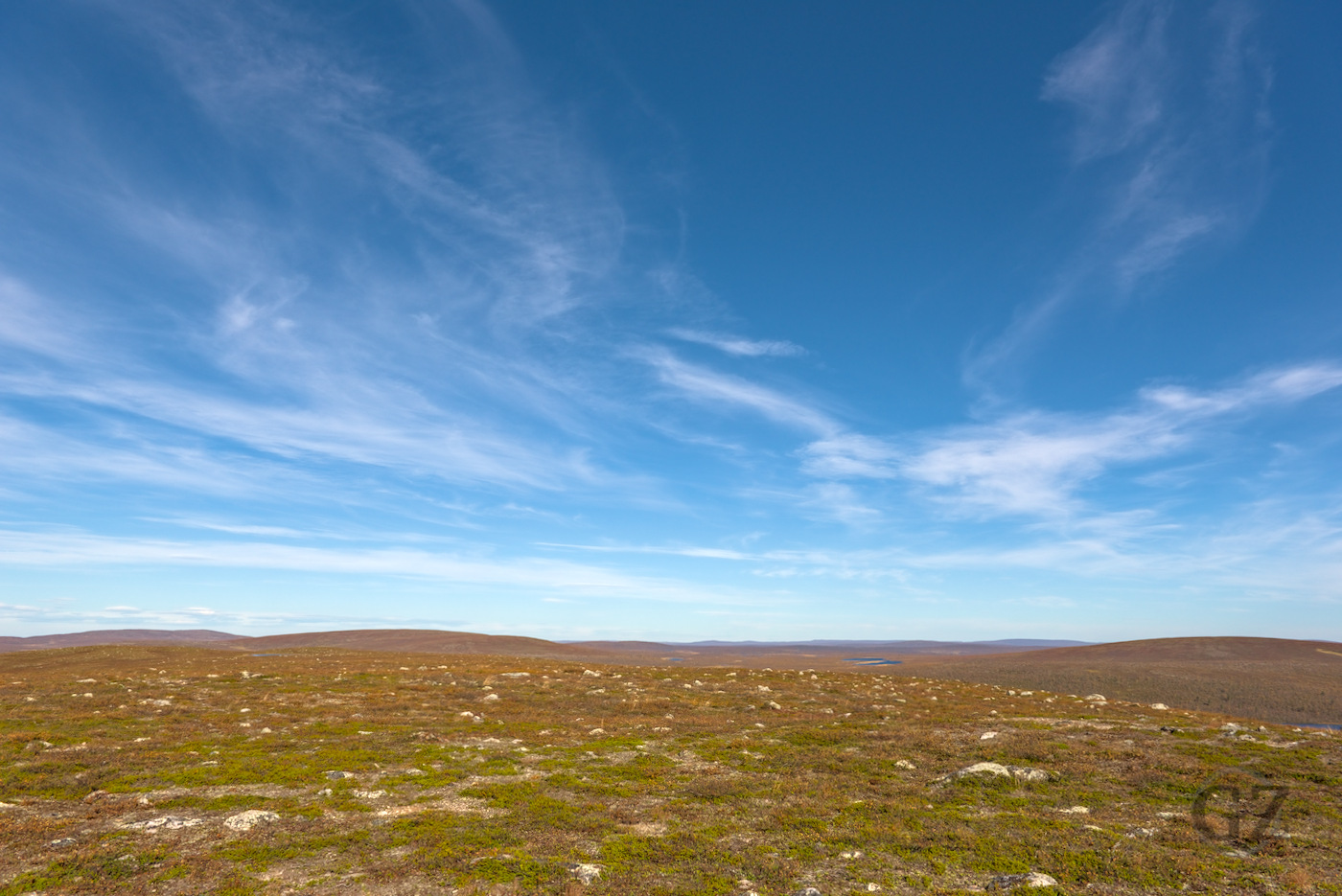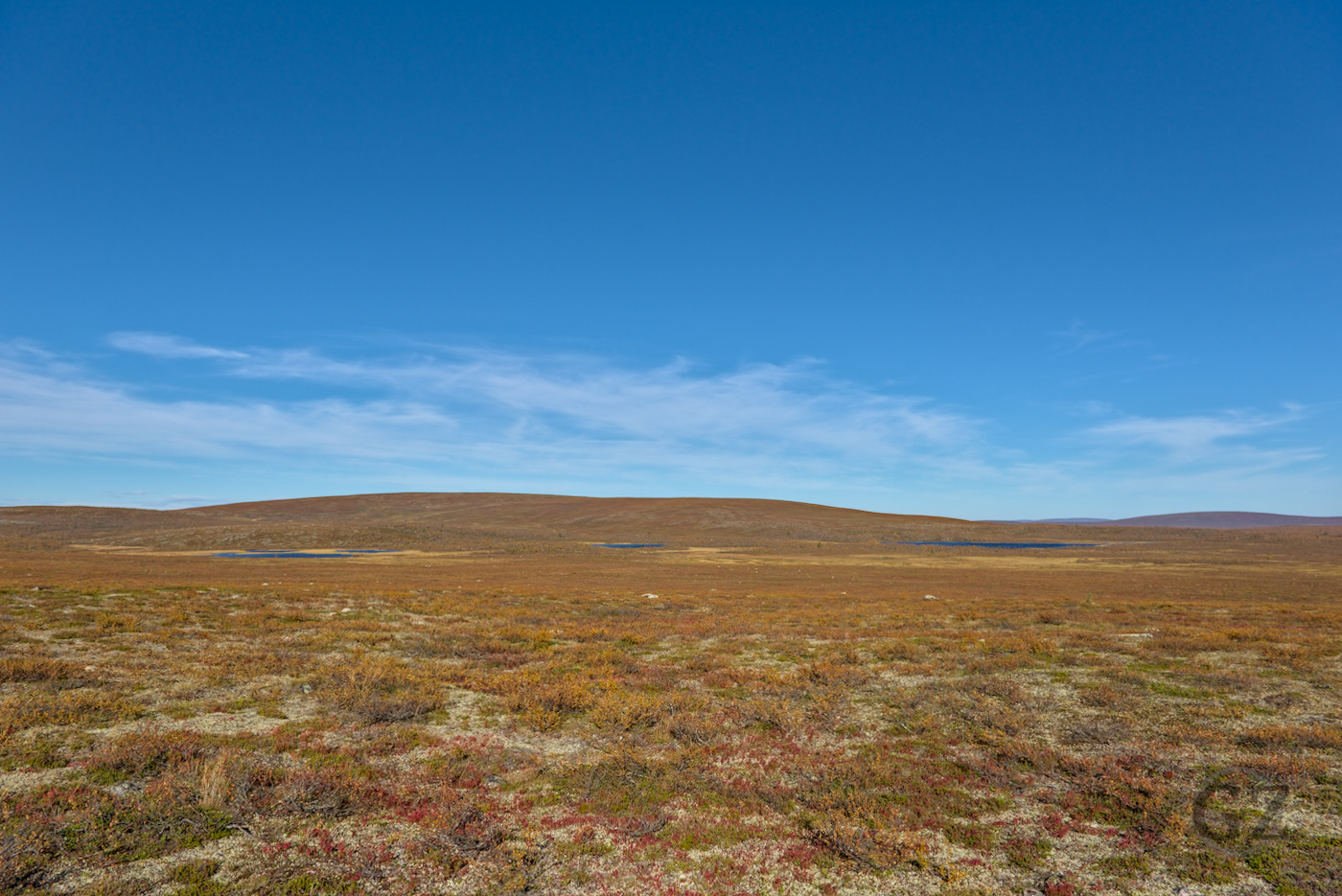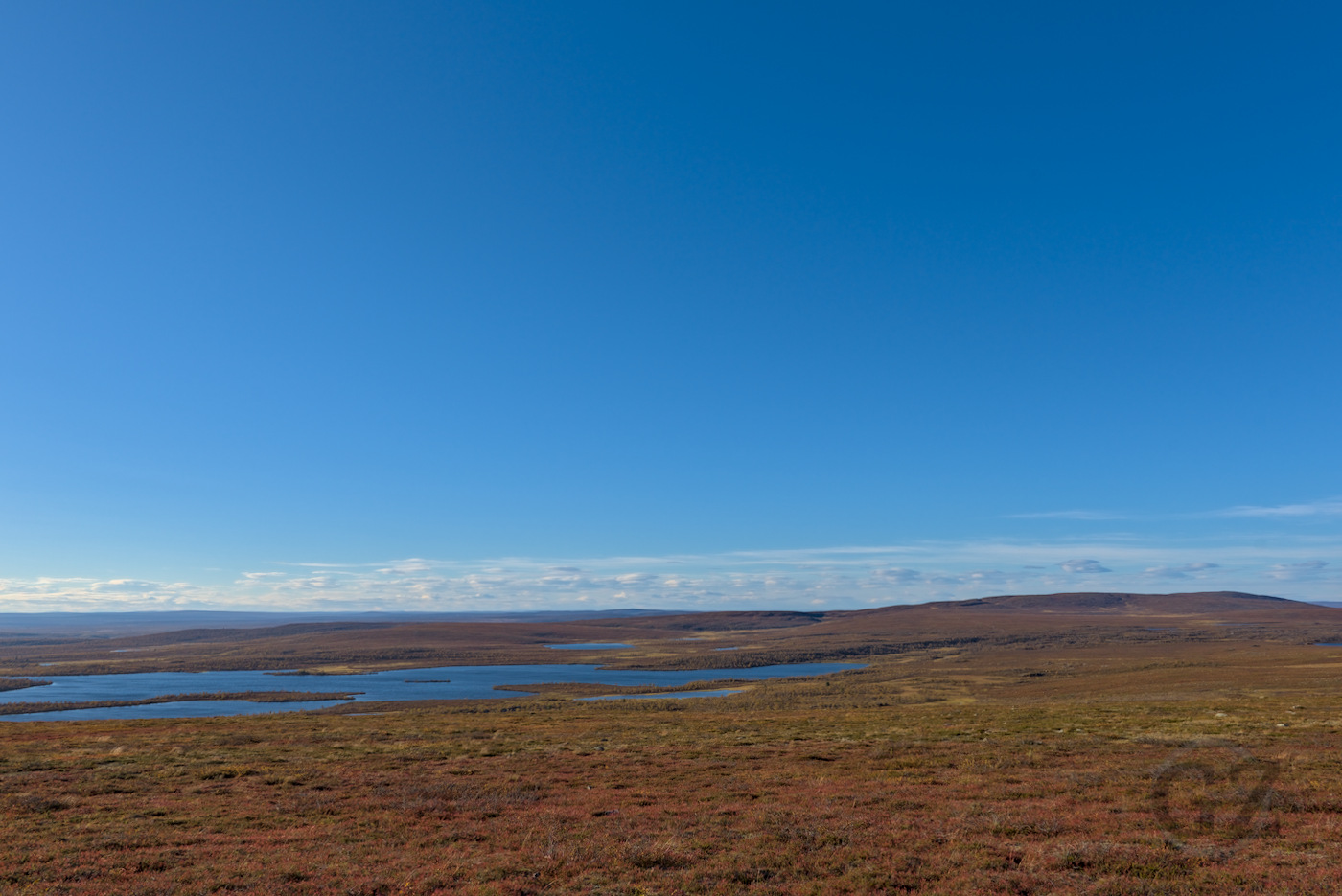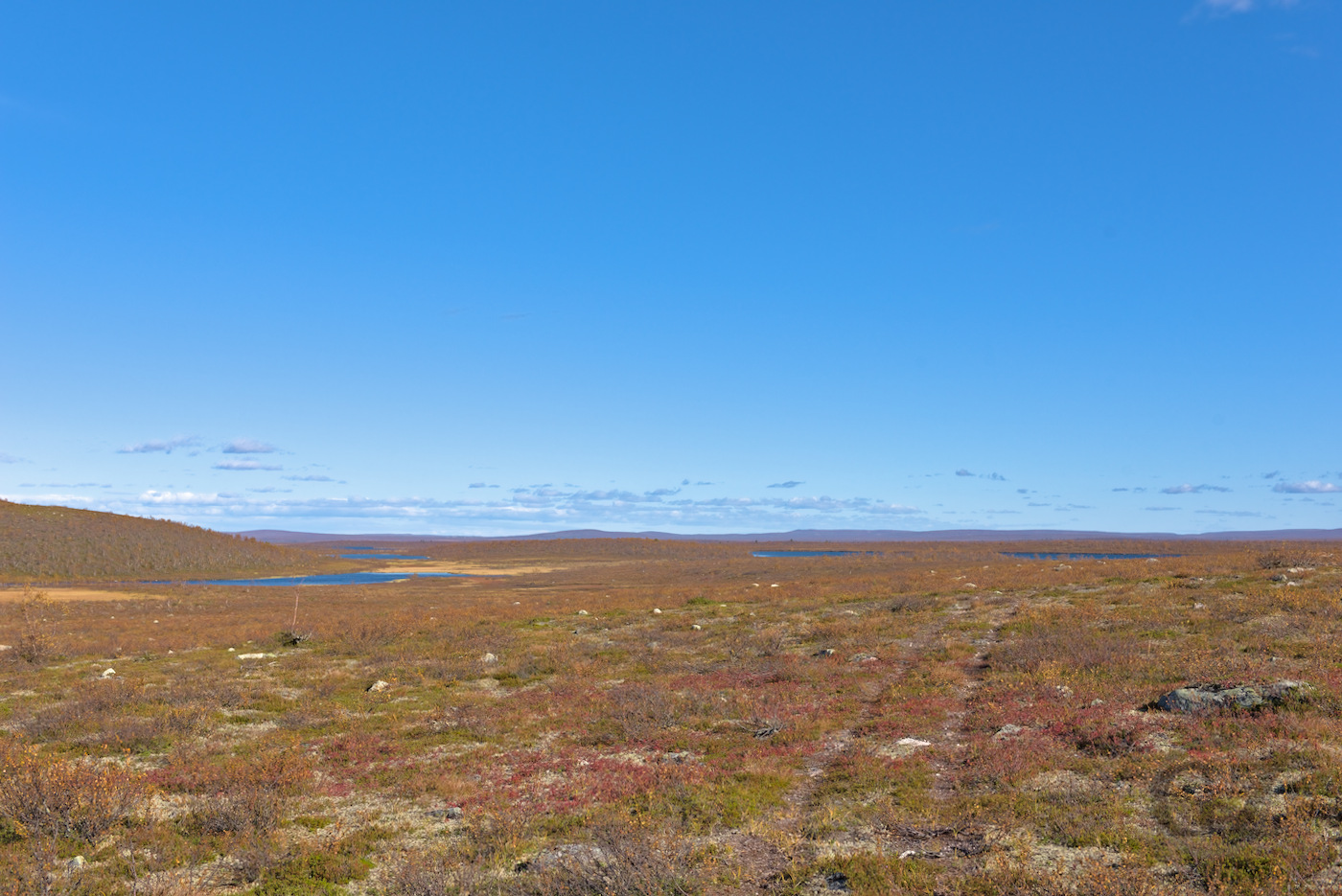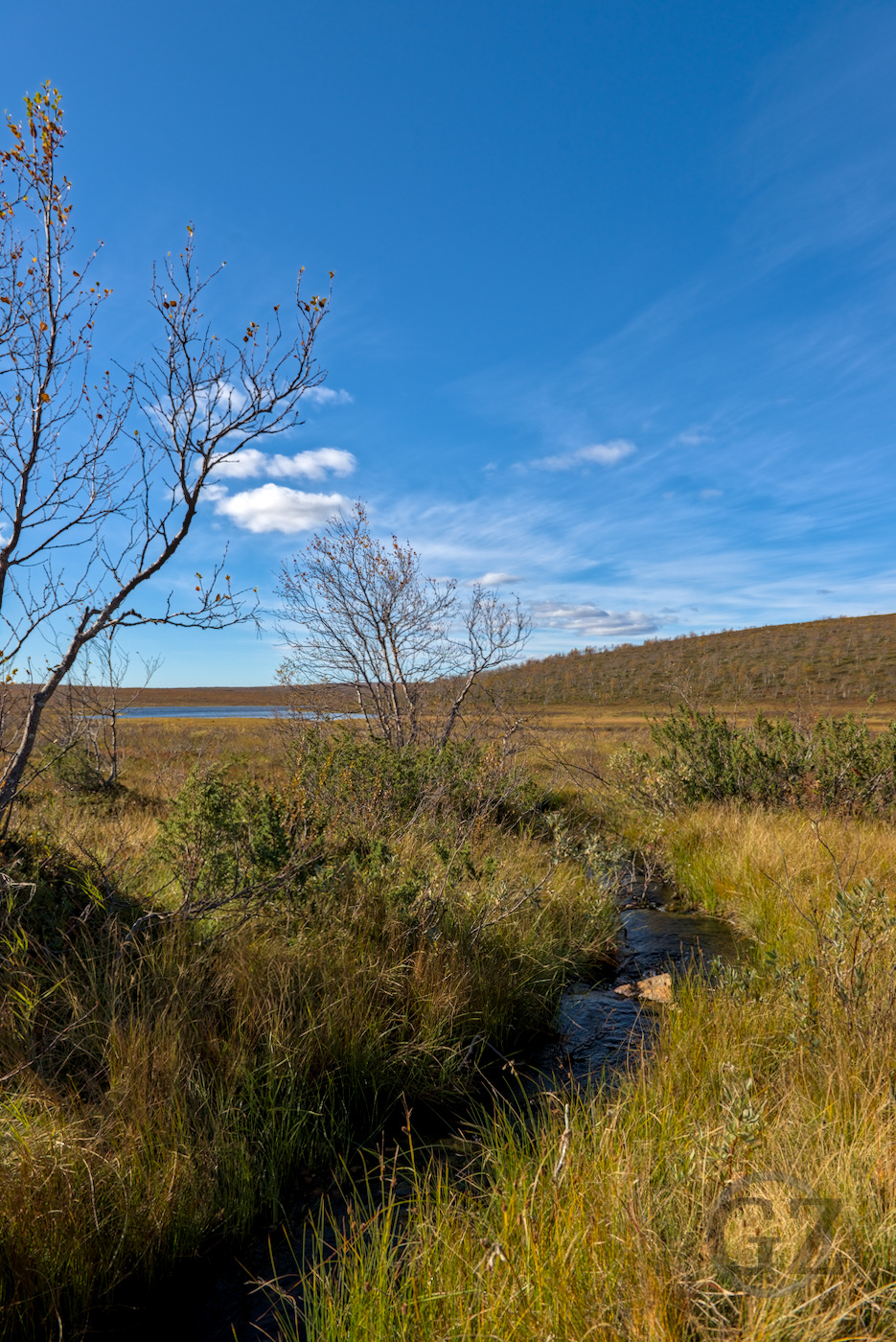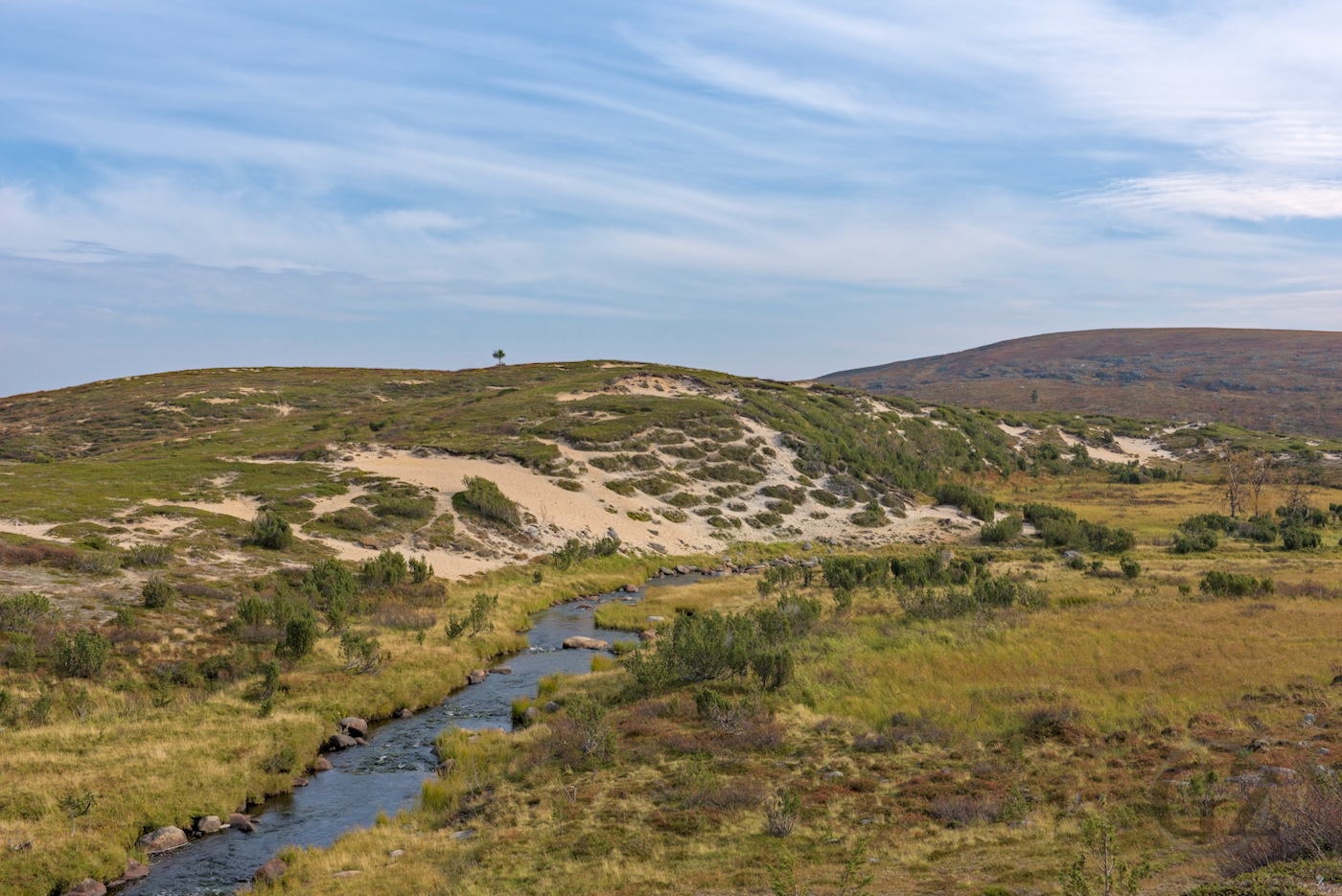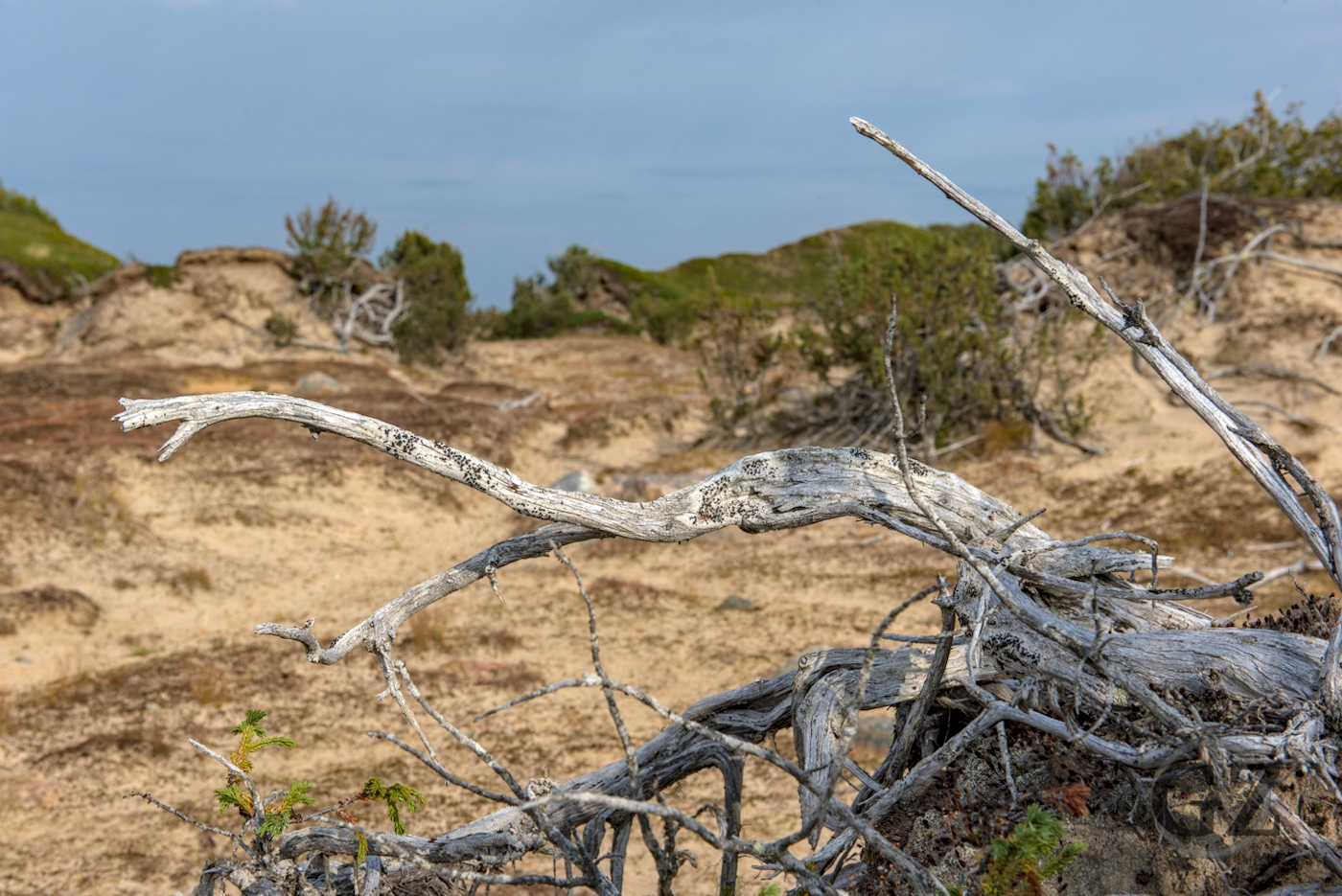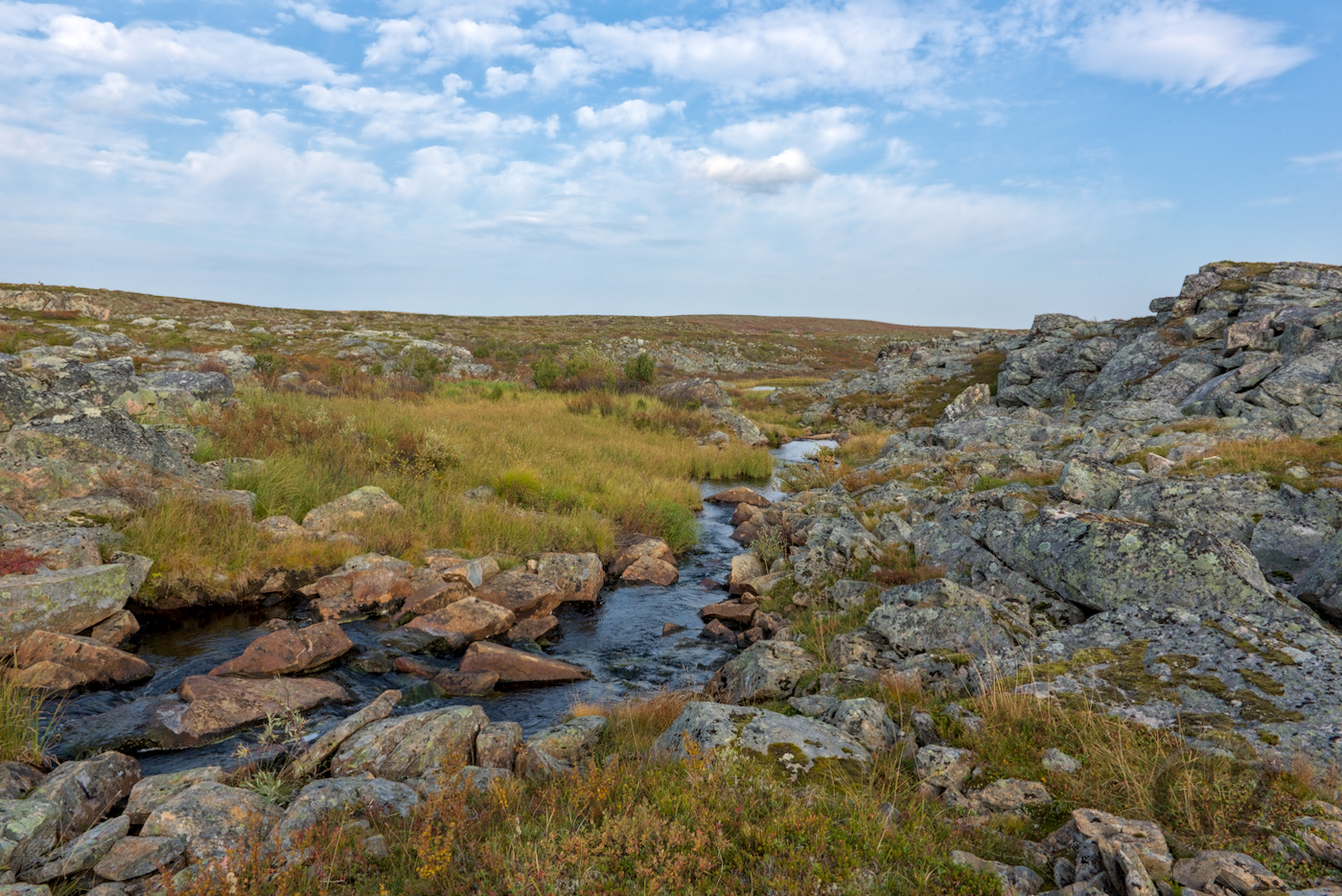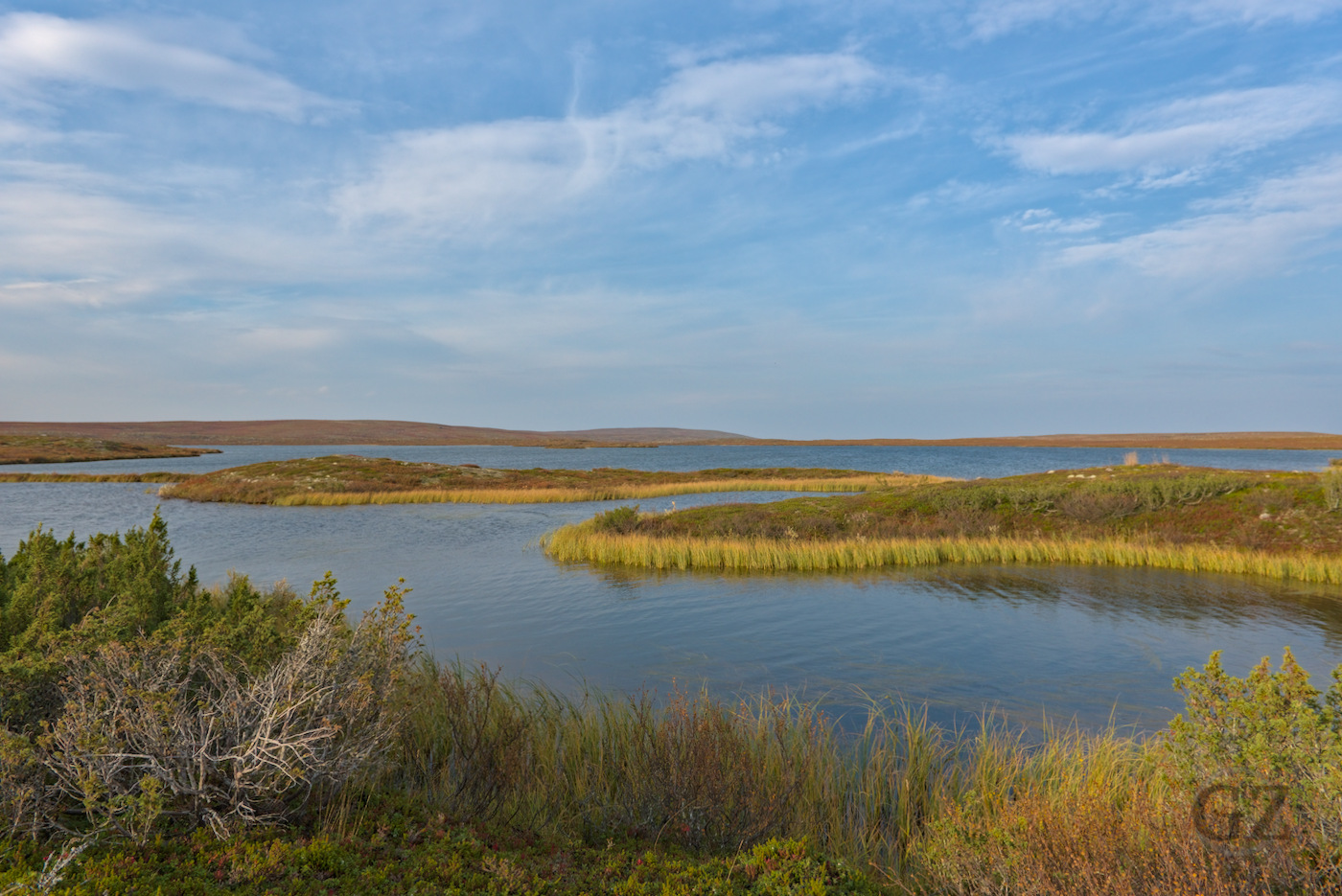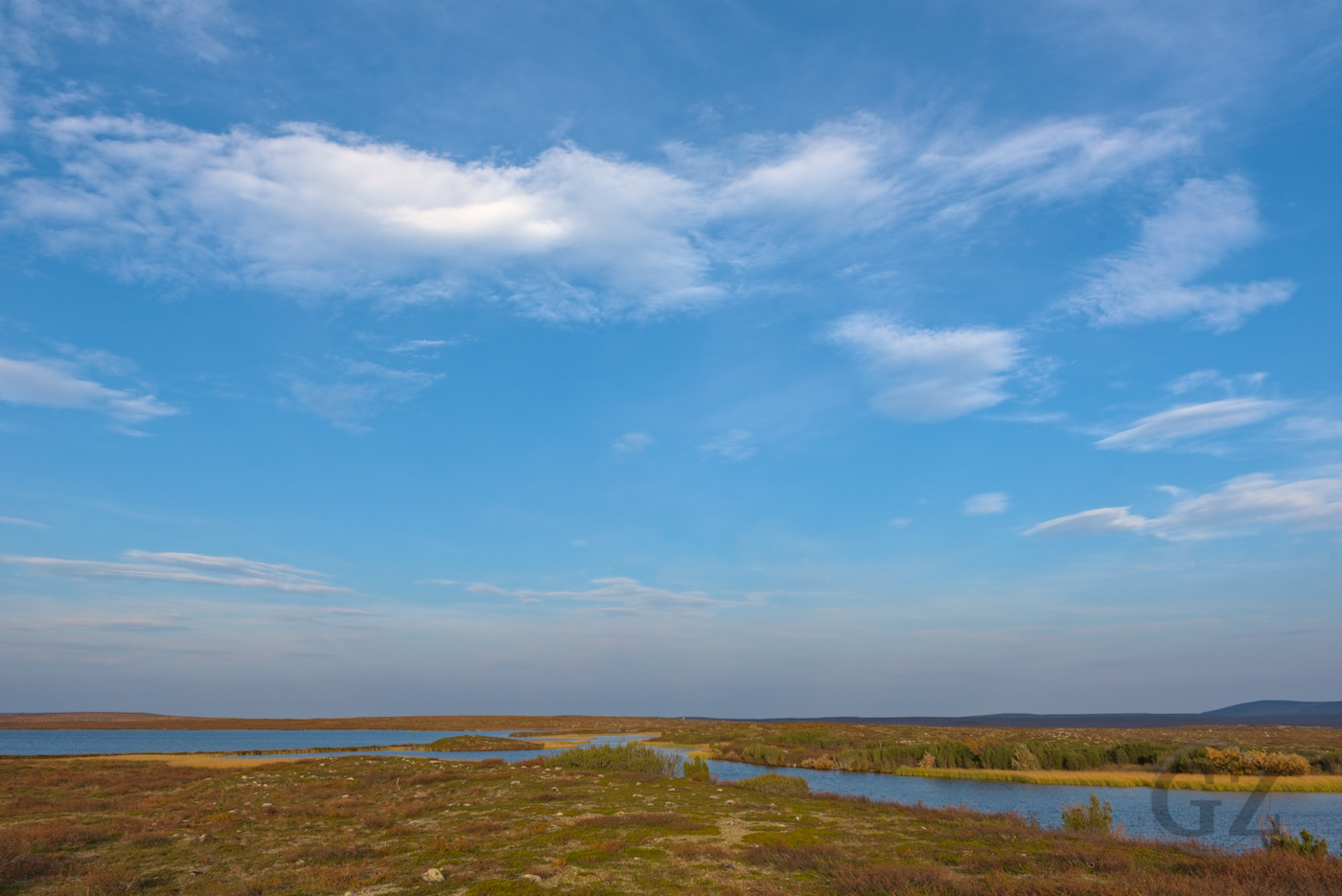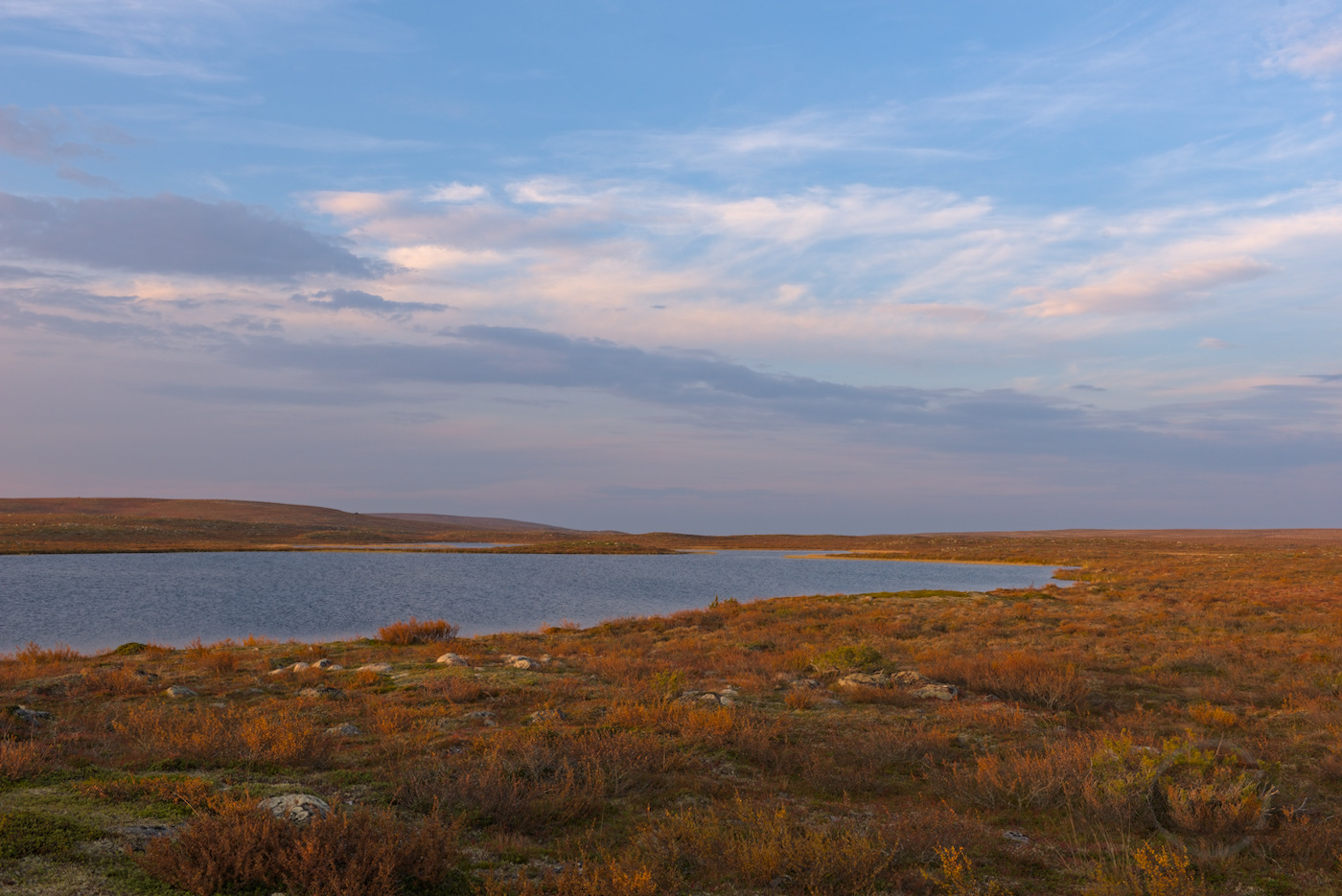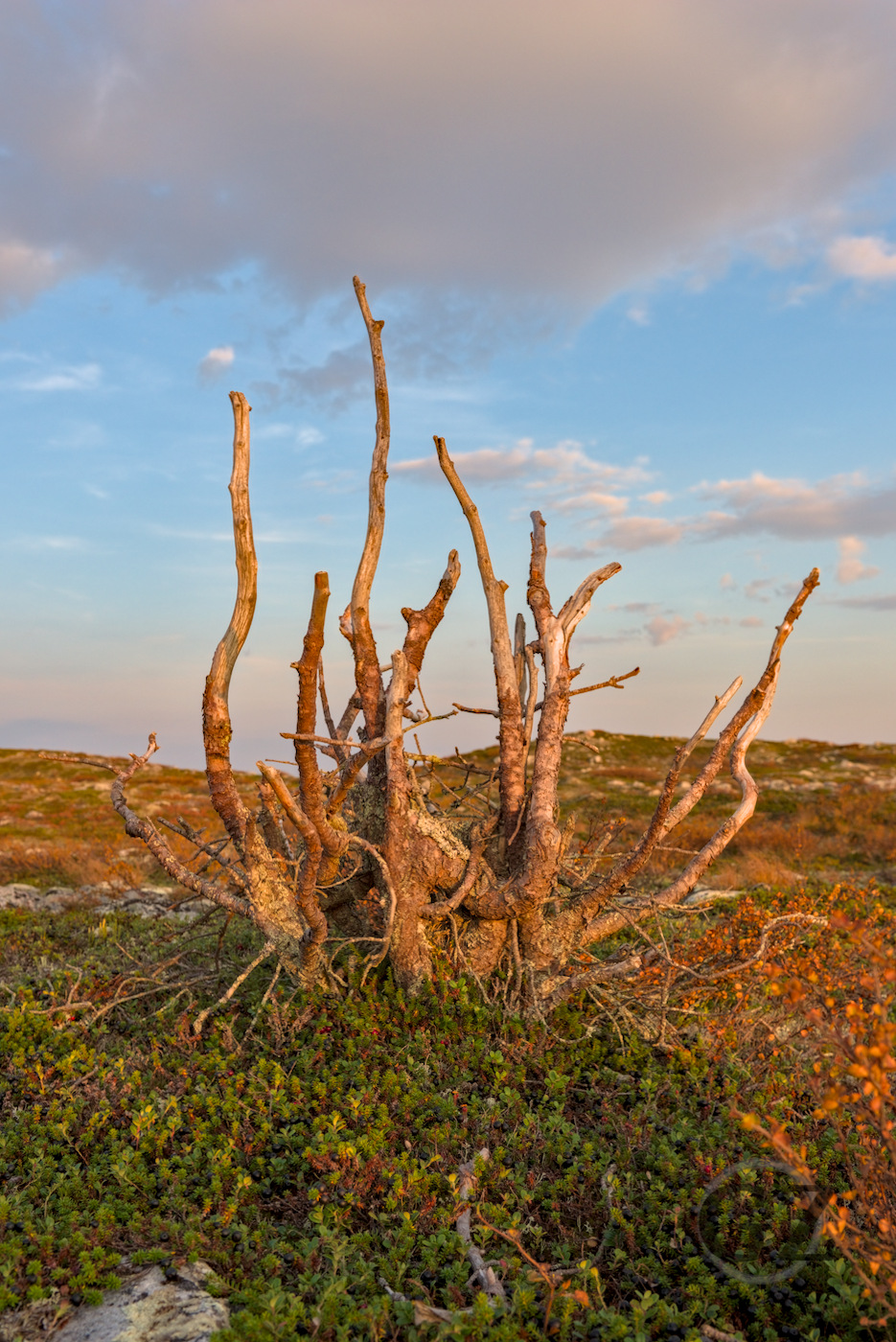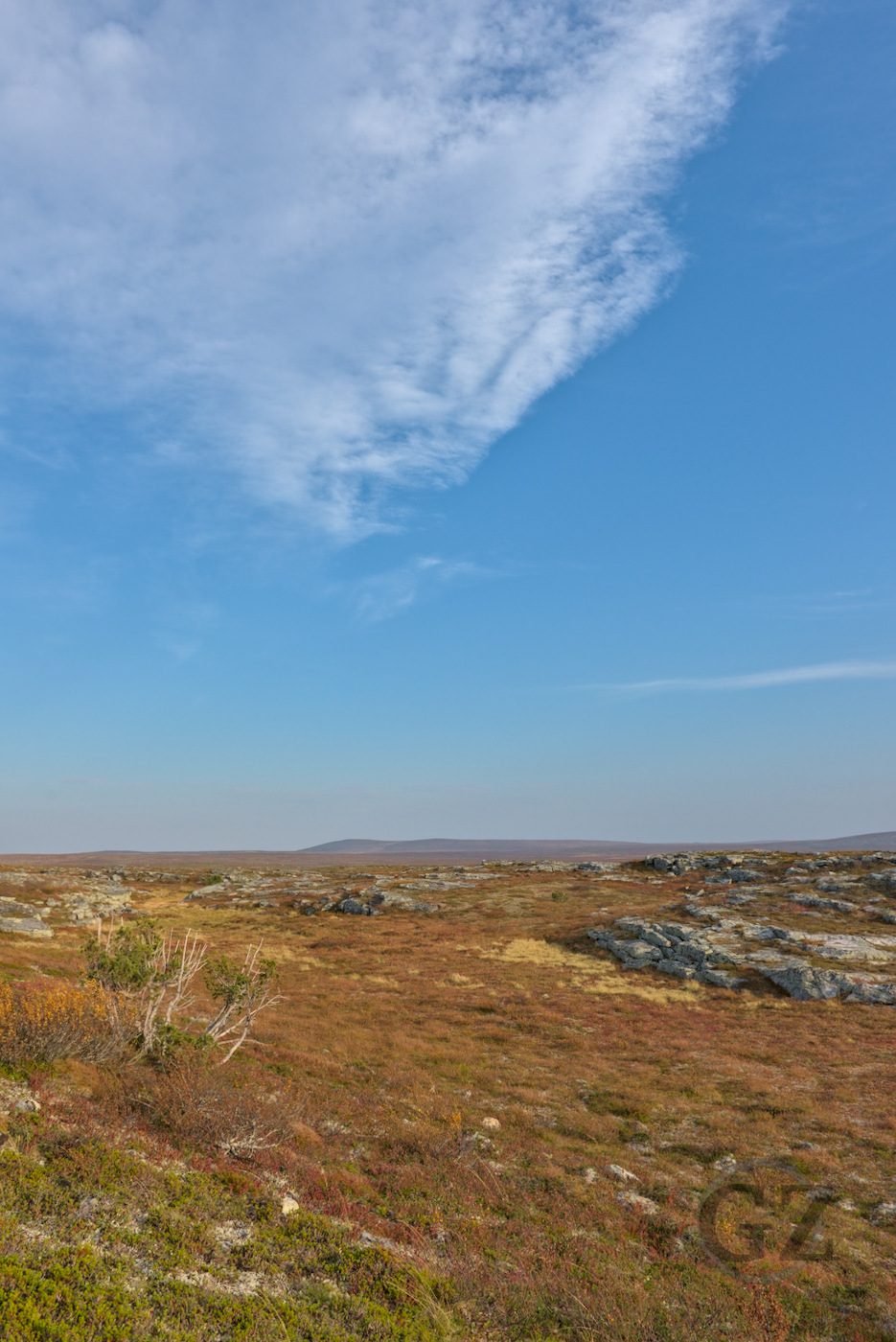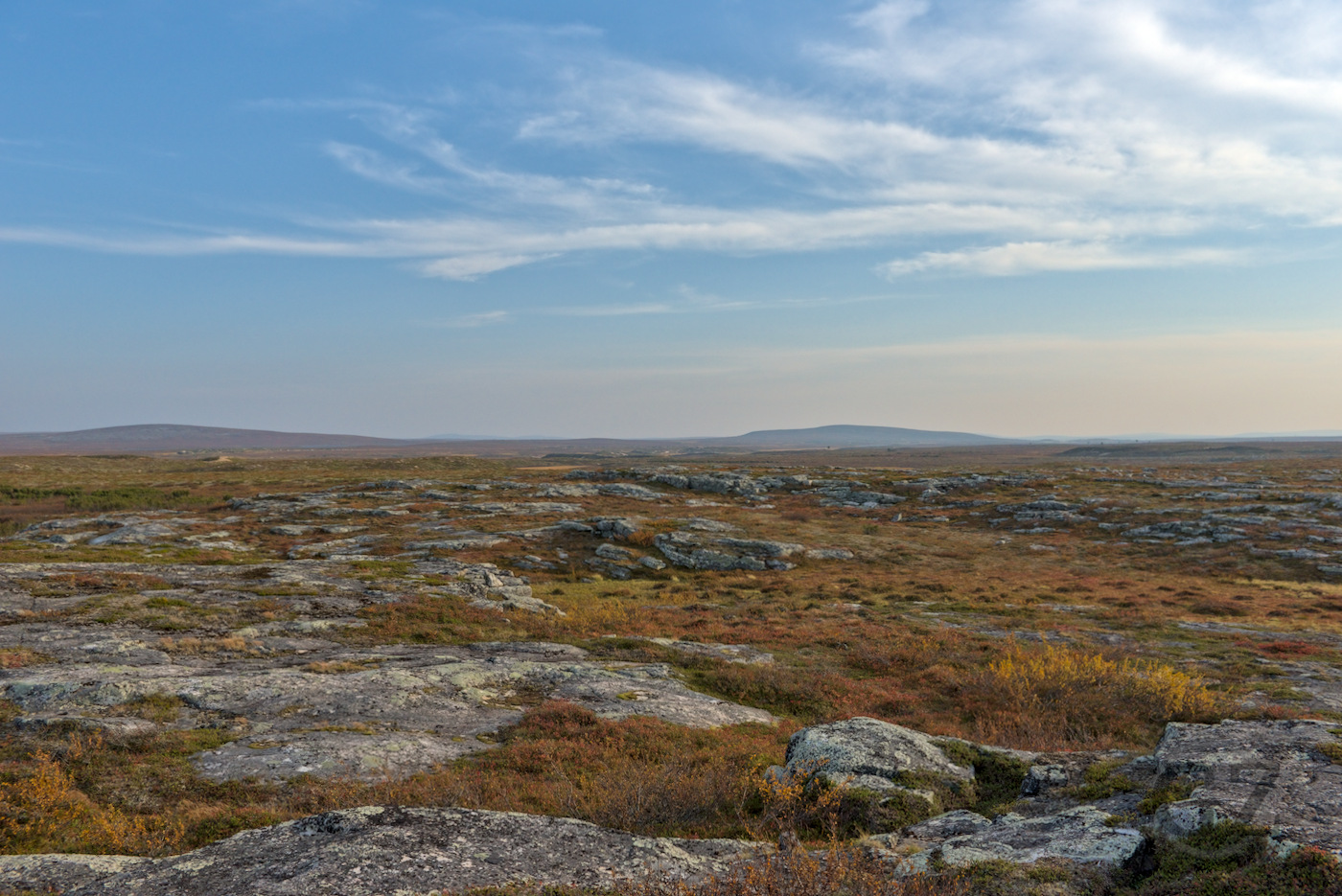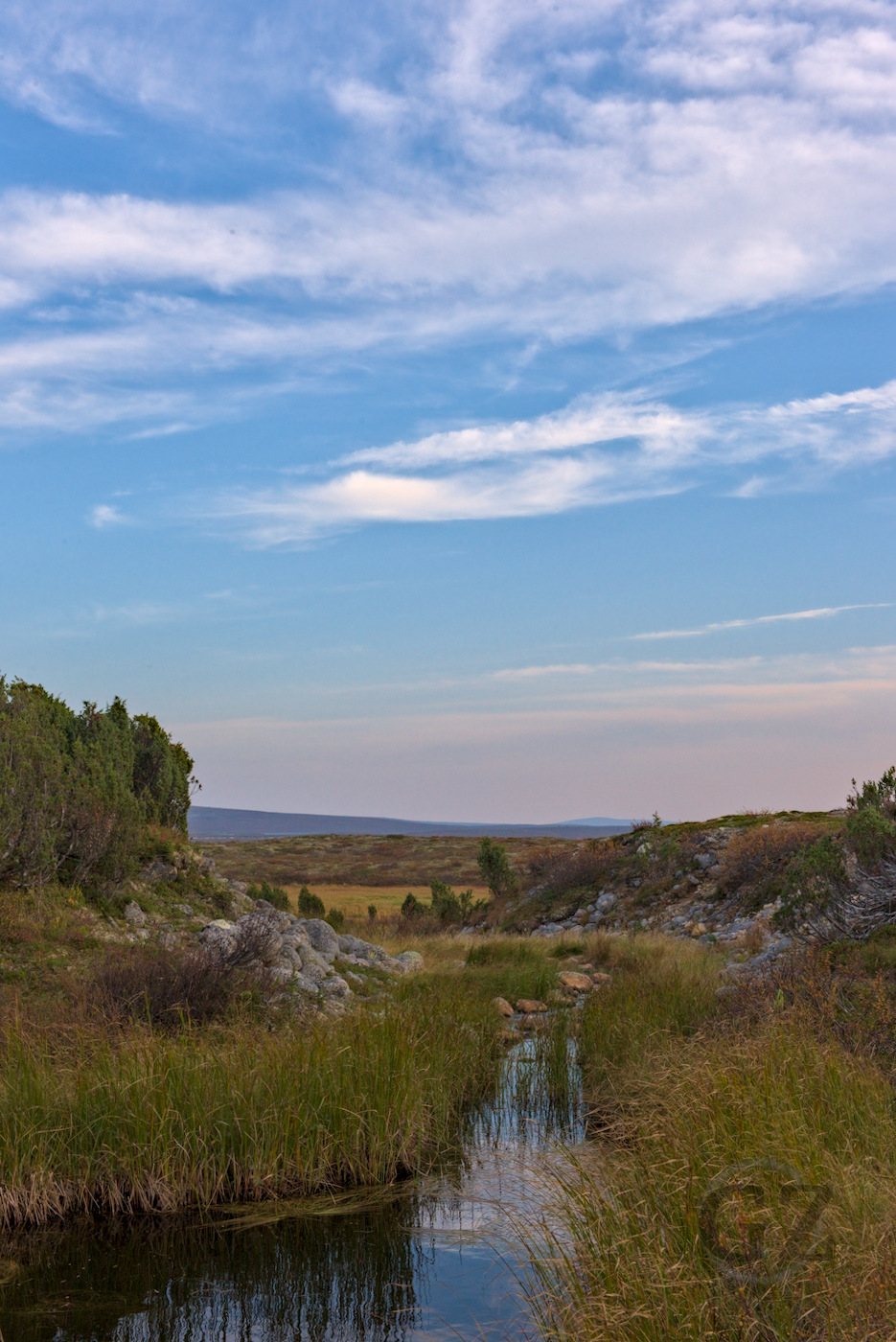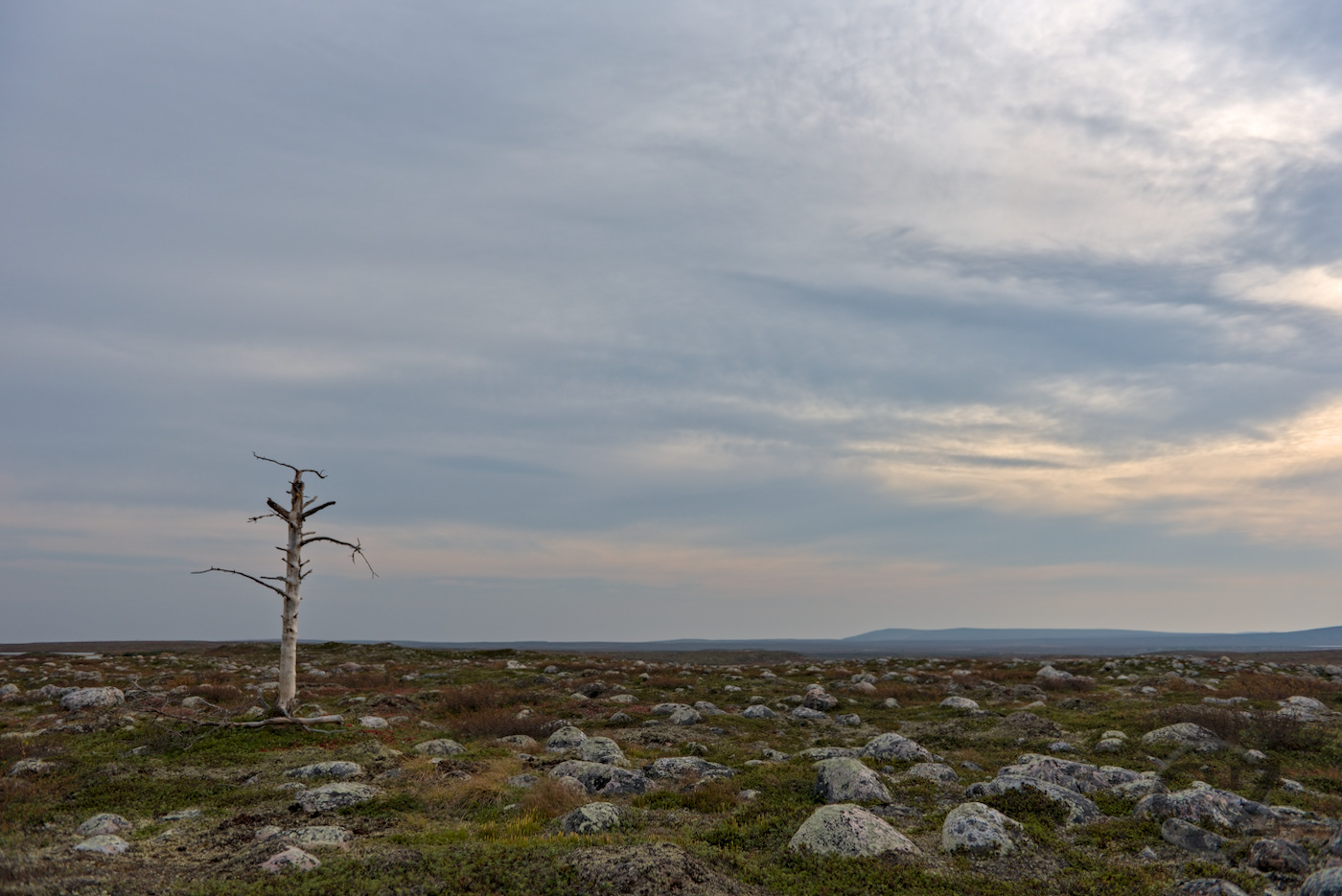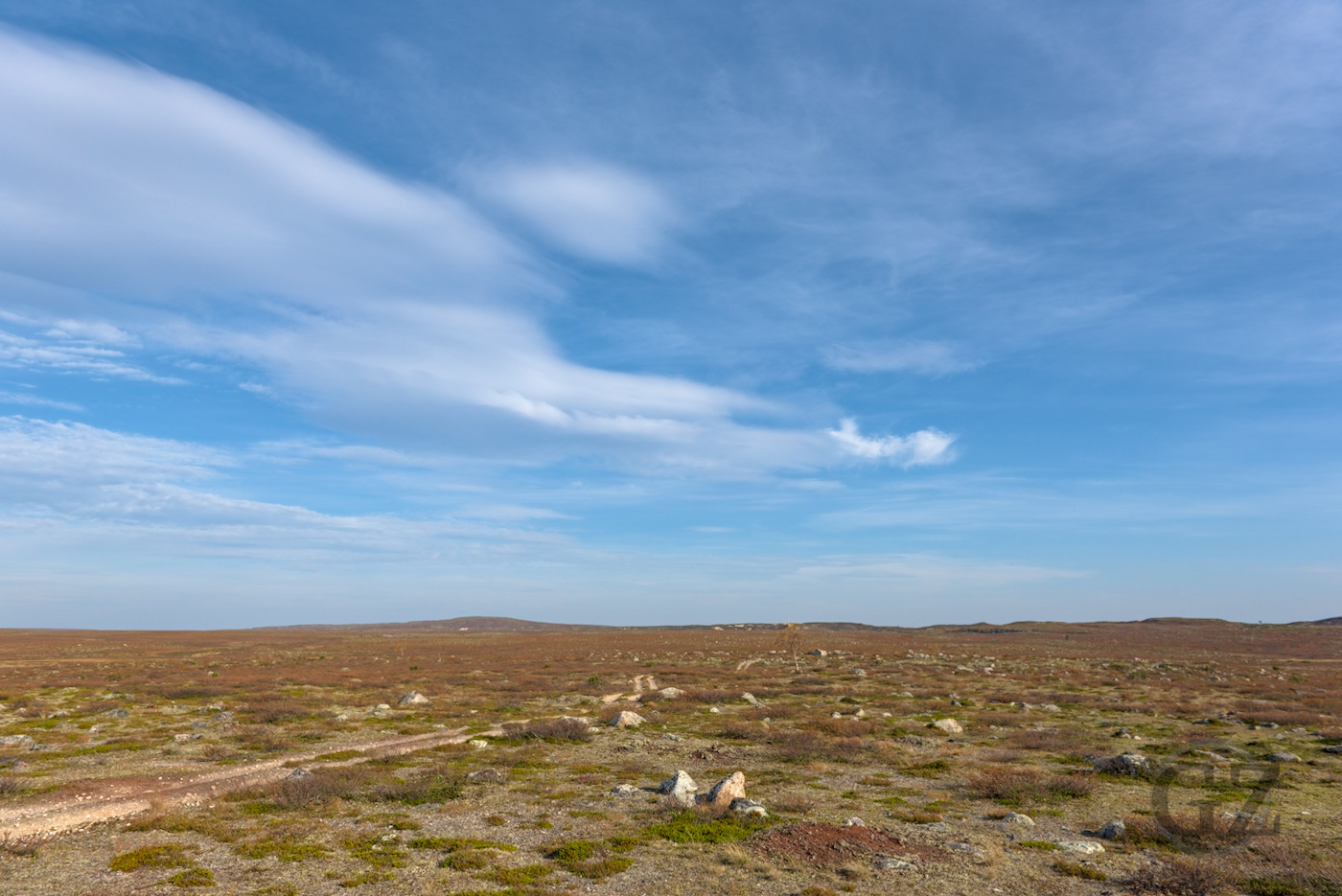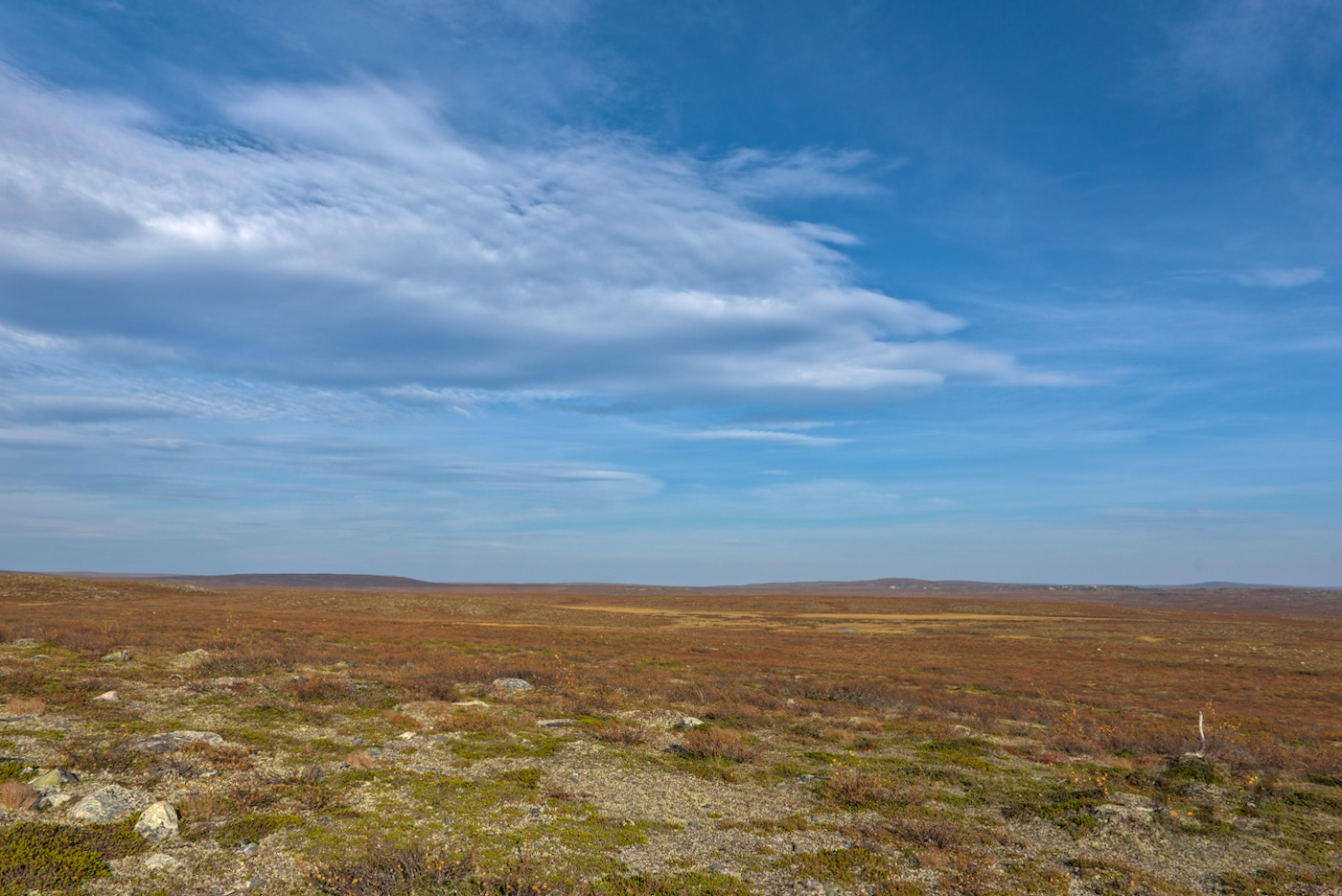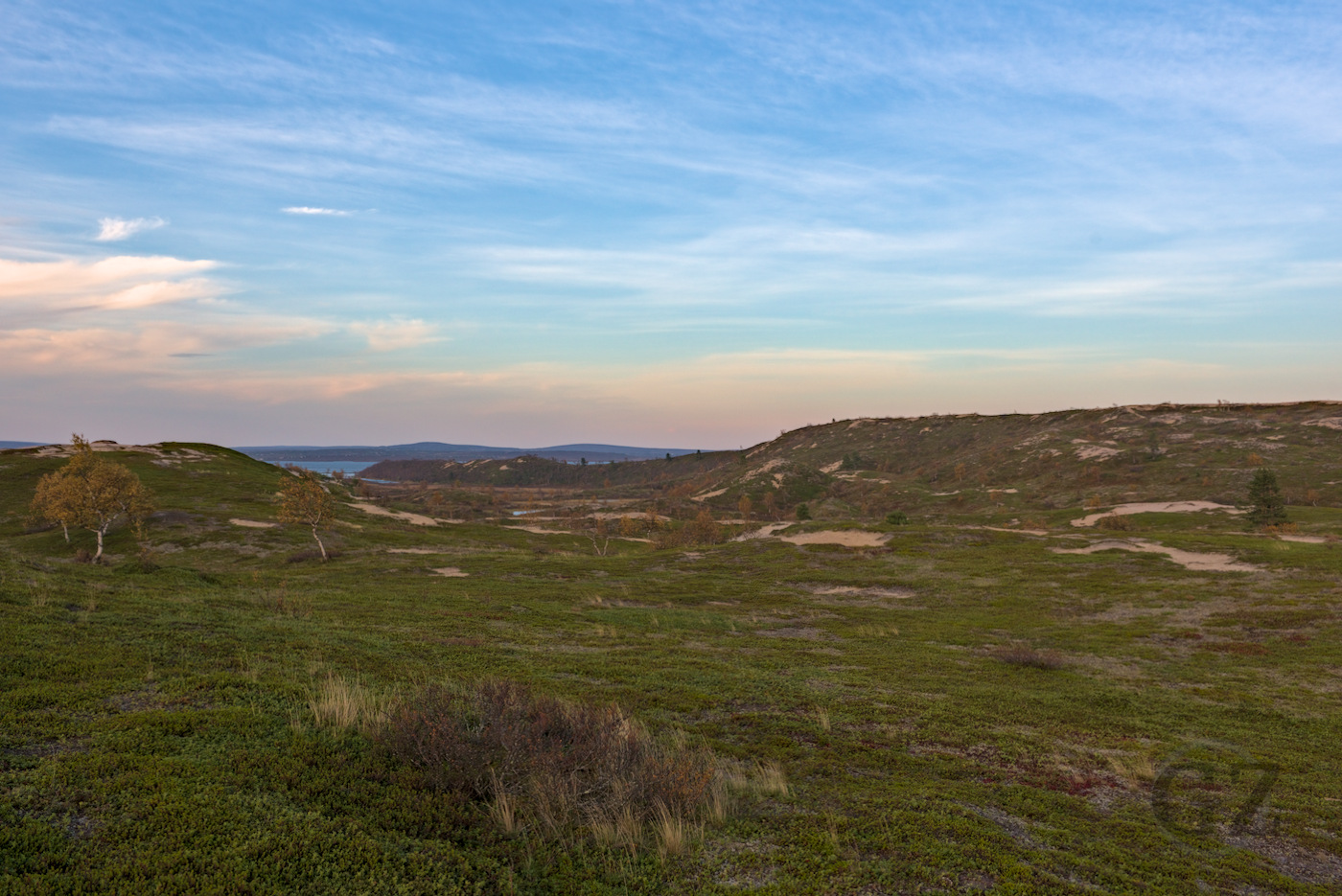A hike from Hetta to the Norwegian border, north of lake Pöyrisjärvi: Experiencing autumn colors in the Pöyrisjärvi wilderness area.
Setting off for a Hike
After a long stretch of not having had time for a proper hike, this autumn I really wanted to take a few days off and go for a little hike in the nearby nature. Starting from Hetta, I walked up to the Norwegian border, and experienced the great autumn colors in the Pöyrisjärvi wilderness area.
Setting of my hike from Hetta I roughly followed the river Näkkäläjoki upstream for some 10 kilometers before deviating into the fell area near Leaiboaivi. The summer was very dry and warm with several weather stations in the region measuring temperature records. The leaves of the birch trees have already started to change color in early August – a few weeks early than normally (which has been a common theme throughout the summer: mushrooms, berries, change of color of vegetation: pretty much everything was a few weeks early this summer). Thus, when crossing Näkkäläjoki near Hetta, a lot of trees had already lost their leaves.
Pöyrisjärvi and Beyond
After a day of hiking I put up my tarp at the shore of one of the Ragat lakes (Ragatjavrrit). In the next morning I hiked up on the top of both Corroaivi as well as Olkovaara in order to enjoy the wonderful view over the tundra area. The sky was very clear and I got pleased with a very long range of visibility. After another night at the shore of a tundra lake (which doesn’t have a name on my map), I headed towards the eastern shore of lake Pöyrisjärvi, where I crossed the river Pöyrisjoki (that is, I actually forded the lake where the river starts). As the sun was still standing high, I decided to continue my journey to the next guaranteed water access behind Sahpanpalo and ended my day on the bank of the river Suomajoki.
Tundra, Swamps and Sand Dunes
While cooking my supper the sunset arrived. With the sun disappearing it immediately got significantly colder as the sky remained clear. The night turned out to be rather chilly, yet not beyond my sleeping bags’ comfort zone. During the previous day I had been hiking a long stretch so for the following day I took it a bit easier. Not only did I hike slower (and thus a shorter distance), but I also spend more time faffing around, that is, spending more time to just observe wildlife and vegetation, taking photos, and to explore several sand dunes in more detail.
Many of the sand dunes in the area are active, that is, they are moving. Yet, they are not plain but sparsely overgrown by a small number of different plant species. Most notably those are lingonberries, crowberries, and juniper trees. In the sand dunes which I explored I was particularly fascinated by the growth of juniper trees.
Yet, I also found the “corpses” of juniper trees, including the dead root systems of the trees aesthetically highly pleasing. The roots are often left behind when the sand dunes move on, and as they loose their substrate, they remain – as it often seems like – hanging in the air. Another aspect that makes the landscape in the area so fascinating is the diversity of micro-ecosystems, as very often one would find sand dunes right next to swamps, right next to tundra vegetation, right next to brooks and lakes, etc.
Camping Between Tundra Lakes
In the end of the day I found myself in between some tundra lakes, where I put up my tarp and spent two nights. While the wind was coming from the south for the entire time so far during my hike, the wind speed significantly picked up. While this didn’t come as a surprise in the open tundra landscape, I got a bit nervous when even during a clear night the temperatures stayed surprisingly warm, despite the increasing wind speeds. So I packed up my tarp after having had a great time in the tundra, in order to head further south again where I would find more wind shelter from trees.
Stormy Return
As I reached the lake Hauki-Termisjärvi in the evening, it turned out that my intuition made me make a good choice as that night actually turned into a stormy night. It is difficult to estimate the wind speed in the location I was camping, but the nearest weather station in Näkkälä showed wind speeds of 12m/s for the night, with wind gusts even above 20m/s.
Final Remarks
I happened to know that a good friend was nearby Näkkälä on the next day and I was offered a lift. Thus I headed to Näkkälä to get a lift back to Hetta. The trip turned out relatively easy this time. Due to the warm summer and lack of precipitation in August, the swamps were dry and the water levels low. While this is worrisome for the ecosystems, it did make crossing of wet lands, lakes, and rivers much easier. Also during my trip I only encountered occasional showers, but no continuous rain (except for the last day), so all in all I had a relatively easy hiking conditions. Yet, the highlight of the trip was that I saw a rare gyrfalcon from very close distance (we apparently both got startled when we eventually discovered each other), which are almost extinct in Finland (it is estimated that there are only 16-27 pairs left in Finland).
